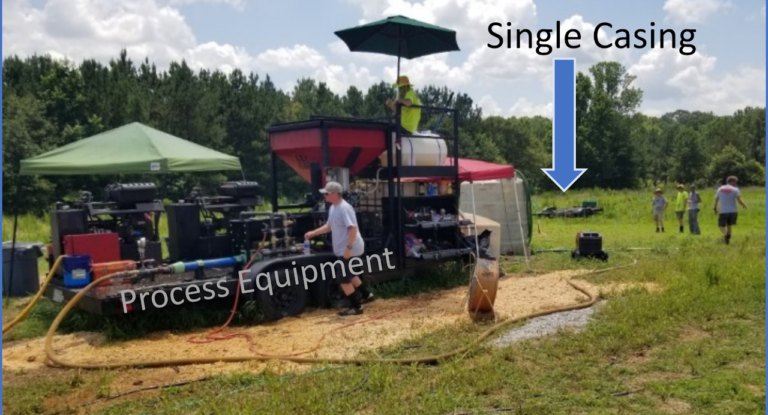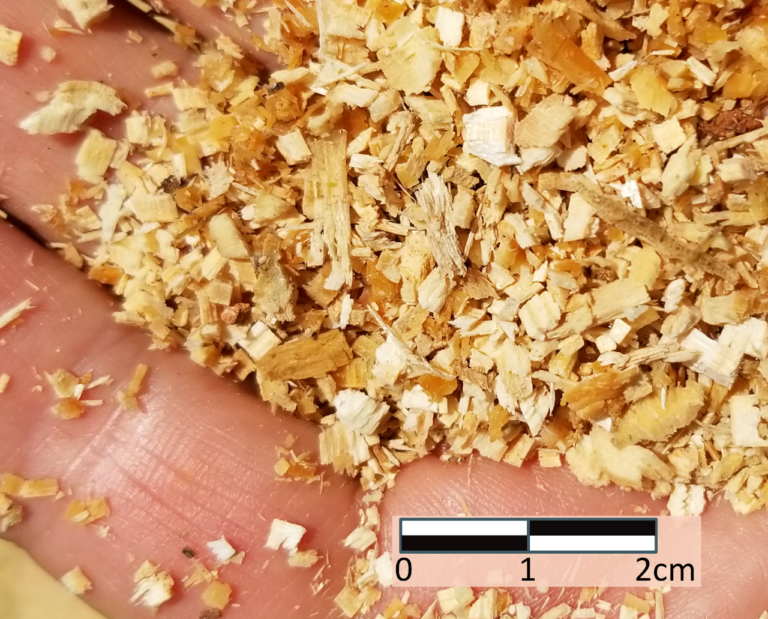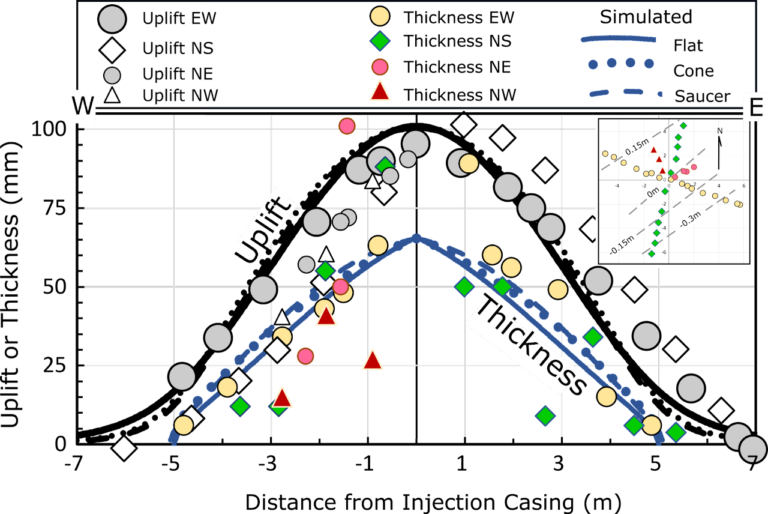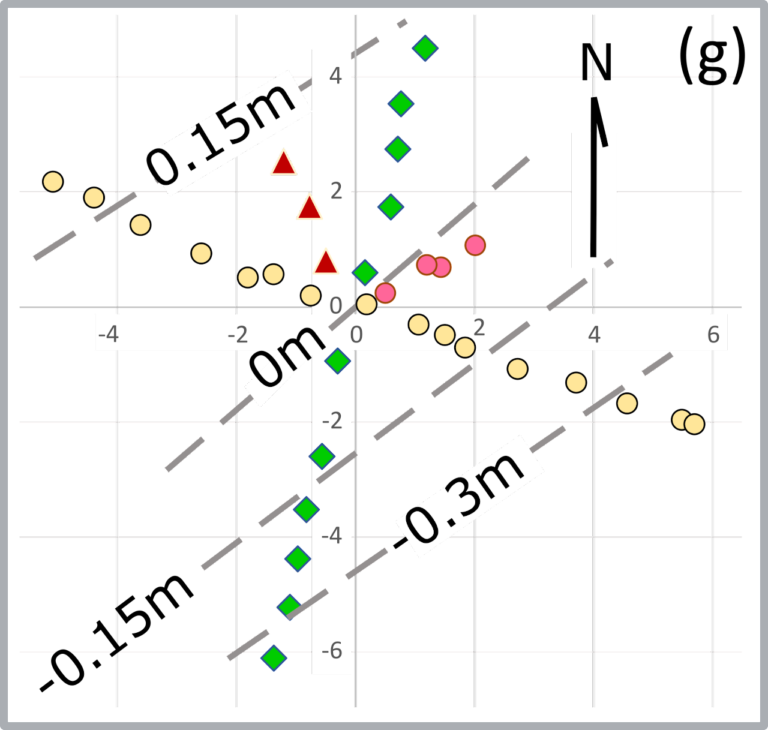Field Demonstration
Carbon SIRGE is based on methods of injecting solid compounds to help clean up contaminated sites developed by FRx Inc., so we were comfortable that the basic method was sound. Nevertheless, we felt that a field demonstration would help prove the concept of using these techniques to store carbon and establish baseline performance characteristics.
The field demo was conducted by personnel from FRx Inc. in western South Carolina at two locations. One location has a single casing that was used for injection, and the other one has a 3×3 array of casings. Reference points were surveyed at both locations to measure uplift.
Injection occurred at 8 ft depth, well above the water table. This test was much shallower than the depth that would be used for full-scale applications.

Injecting wood, storing carbon and lifting the ground
Figuring out what happened
After we were finished injecting, we came back to the site with a small, direct-push rig to push a sampling tube through the injected layers. We obtained approximately 100 cores at 32 locations. Injected layers of wood were found in most cores in the 5-8 ft depth range. The thickness of many of the layers was more than 1 inch, and some of them were more than two inches thick. The photo in the lower right shows a layer of injected wood around 2 3/4 inches (7 cm) thick in a core sample.
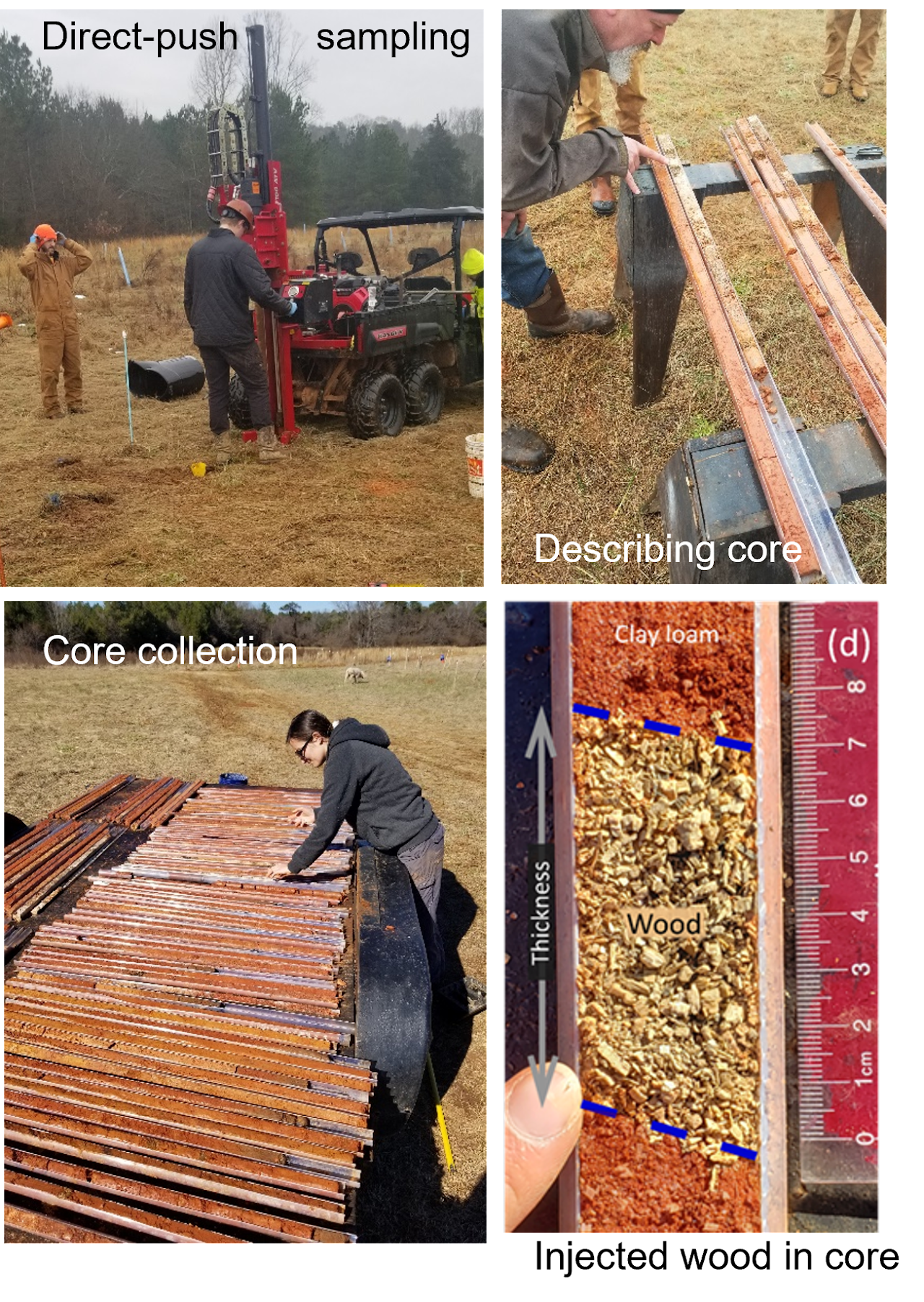
Putting together the data
We plotted data describing the uplift and the thickness of wood particles at each of the measurement locations, shown as symbols below. The uplift data are shows as white or grey symbols and the thickness data are shown at colored symbols in the figure below left.
We want to be able to predict the uplift in projects that are similar to the field demo, so we used the data to calibrate a computer model. More info about the model is here.
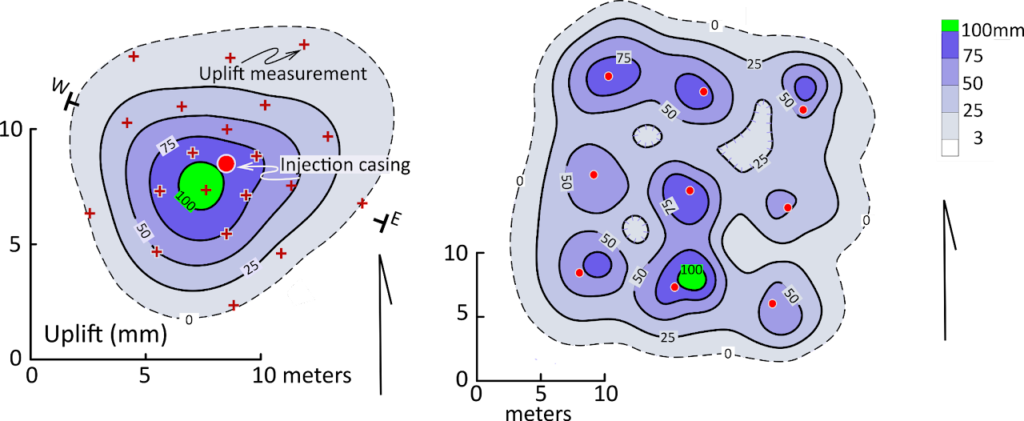
Carbon SIRGE Single Casing
This video shows the uplift in mm in the vicinity of the single casing injection location.
Carbon SIRGE 3×3 Array
This video shows the uplift in mm in the vicinity of a 3×3 array of boreholes where we injected wood particles to store carbon and raise the ground surface.
Calibrating the Simulation
The computer simulations were calibrated using material properties from the site and the injected volume. This was sufficient to generate reasonable predictions of the observed uplift. Compare the uplift data and the lines from the simulations in the plots from the single injection location above. Simulations of the single injection location assumed axial symmetry, so they were unable to match the asymmetry in the uplift that occurred in the field. We also compared the simulation results to the observed uplift in the 3×3 array and the results are remarkably consistent, as shown in the figure below. The similarities between the predicted and observed uplift suggest that the model is on the right track.
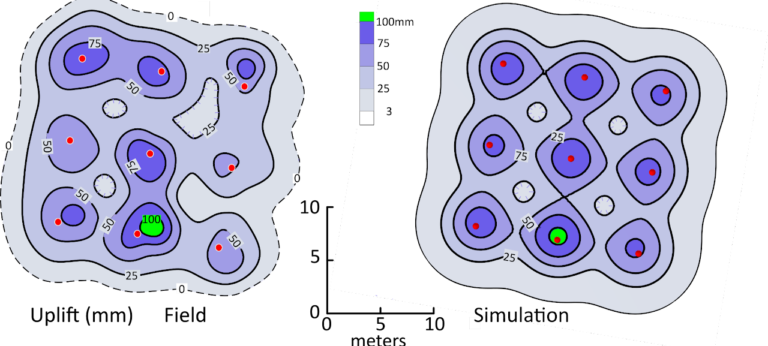
Baseline rates of carbon storage and uplift
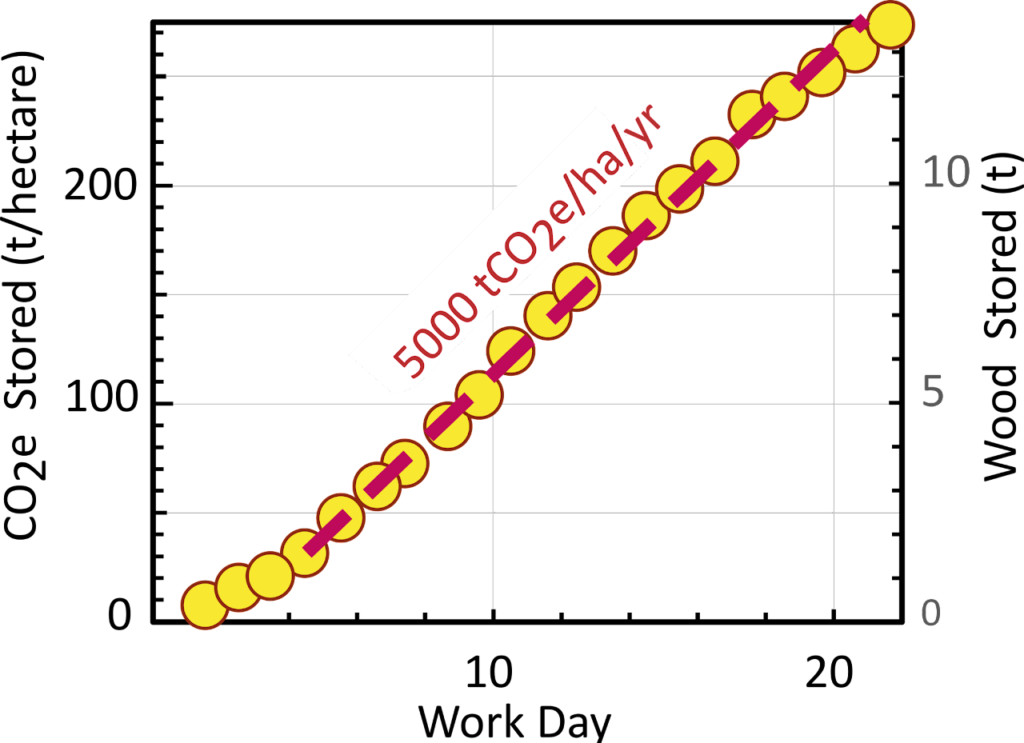
We recorded the weight and volume of wood during each injection. This shows that around 14 tonnes of wood were injected over 22 days. We then converted the wood to CO2equivalent, and we divided by the area of the site, which was around 800 square meters, or 0.08 hectares (ha). This gives a baseline rate of 5000 tCO2eq/ha/yr.
We also determined the average uplift each day. It increased at roughly 1.5 mm/day.
Implications
Those are baseline rates that were demonstrated during the test. It would be straightforward to increase the storage rate by several to 10x by adjusting field methods, but let’s just assume the baseline rates for starters. We can use the rates to answer a few questions:
What would it take to store 1 GtCO2eq/yr using Carbon SIRGE?
There are 100 ha in a square km, so the storage rate is 0.5 Mt CO2/sqkm/yr. This means approximately 2000 sqkm of land would be needed to store 1 GtCO2eq/yr. The average size of a county in the U.S. is around 3000 sqkm, so this would be a modest amount of land, assuming land use can be maintained during operations.
What would it take to reduce flood risk?
Nuisance flooding is caused by water levels less than 1 ft deep that occur regularly. Surges from major storms can cause inundations of several meters.
An uplift rate of 1.5 mm/day would create roughly 1.5 ft (roughly 1/2 m) of uplift in 1 year. This would significantly reduce the effects of nuisance flooding, and it could make important contributions to mitigating the effects of seawater intrusion on coastal ecosystems. That rate would create 5 m of uplift in a decade. This would raise the ground above the storm surge of all but the largest storms.
Those simple calculations suggest that Carbon SIRGE could contribute to carbon storage, coastal restoration and flood protection. Scaling up would require a huge effort, however, so we wanted to evaluate possible show-stoppers before taking this concept seriously. This evaluation is described under Factors affecting scale up.

